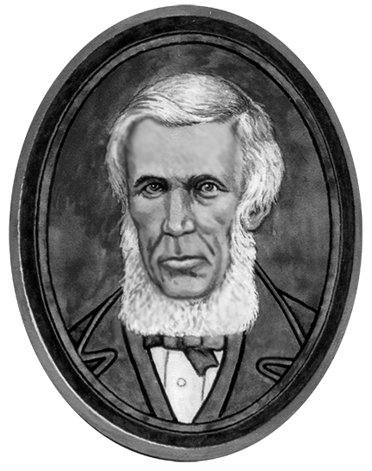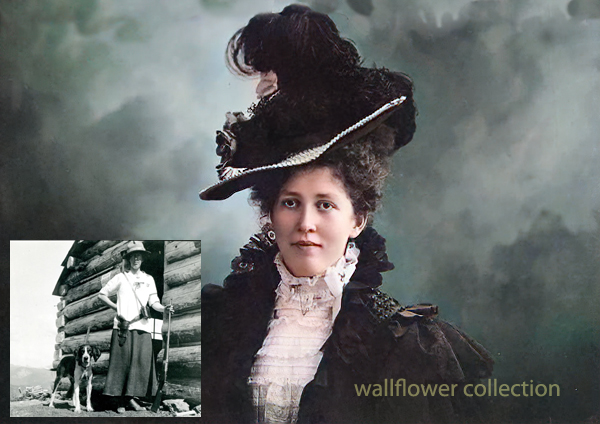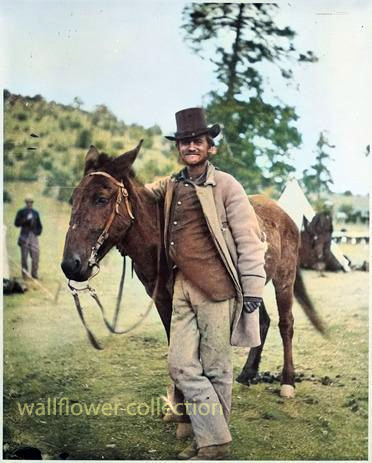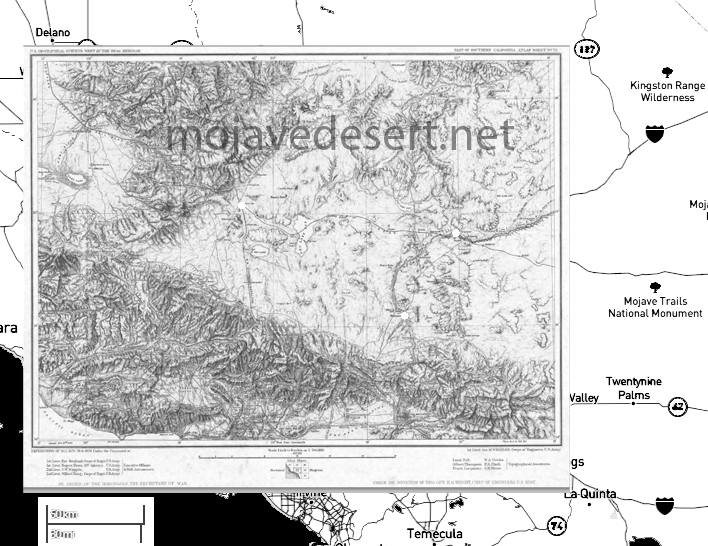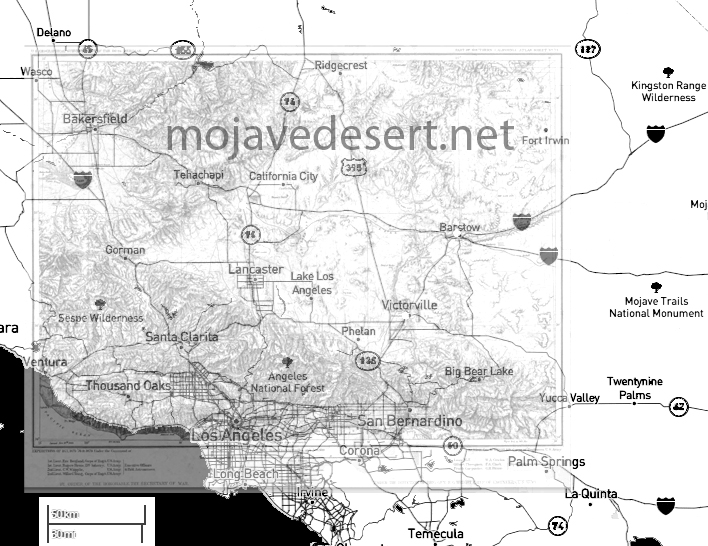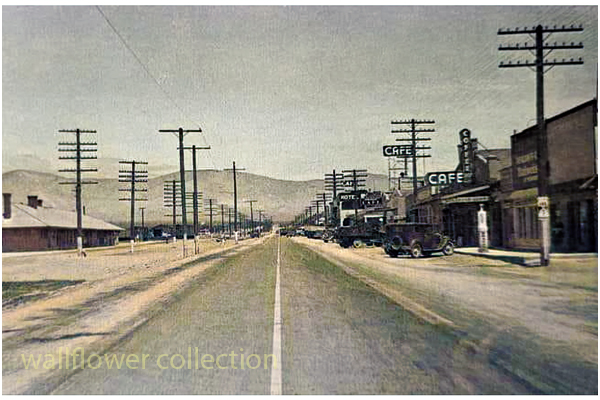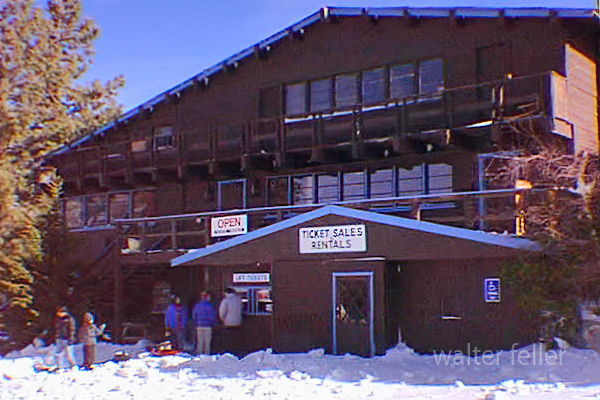The Man Who Made Zzyzx
THE JOURNAL OF THE American Medical Association
VOLUME 105, No. 11, CHICAGO, ILL. SEPTEMBER 14, 1935
Curtis Howe Springer first came to the attention of the Bureau of Investigation through a display advertisement published in the Davenport (Iowa) Times on Oct. 2, 1929. This carried a picture of Springer, who was described as “Dean of Greer College.” The advertisement read in part as follows:
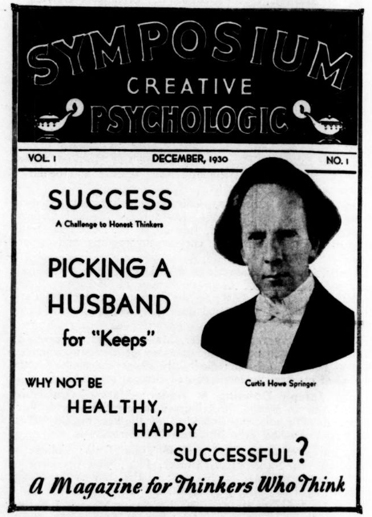
“Money For You. Develop Your Powers. Be Healthy, Happy, Successful. A series of Free Lectures Is offered to the public under the auspices of the Extension Department of Greer College.
“Thousands have paid to hear these lectures, but you can hear them free, through the courtesy of the Davenport Psychology Class.
“President Hoover said the complete abolition of poverty is now a possibility for us. ;
“Analyze Yourself. Know Your Hidden Powers.
In August 1930, the Scranton (Pa.) Better Business Bureau wrote that Springer had been giving a course of “lectures” at the local Y. M. C. A., which he is said to have claimed were presented through the courtesy of the “Extension Department of the National Academy.” What this Academy is or was, if, which seems doubtful, it ever has been, we have been unable to learn. Neither have we been able to learn anything about the “Springer School of Humanism” that was also mentioned. The Better Business Bureau reported further that Springer’s “lectures” were entitled “How to Banish Disease and Know the Joy of Living.” Springer was said not to have charged any admission but to have taken up a collection and also to have sold so-called private courses in psychoanalysis at $25 a course.
Bureau stated further that a local woman who had contracted and paid for a “course” charged Springer with obtaining money under pretenses. When the case came up for a trial, the woman is said to have testified that for the money paid, Springer had agreed to give her twelve “readings” or “sittings,” two a week for six weeks, but that at the end of two weeks, Springer left the city and she received no further notice from him. The Scranton Better Business Bureau reported that prosecution was dropped when Springer refunded the woman’s money.
In December 1930 Springer put out what purported to be the first issue of a magazine entitled “Symposium Creative Psychologic,” a name that is as meaningless as some of the titles that Springer has annexed. This sheet was devoted mainly to advertising Springer and his activities, especially his “Doc. Springer Temple of Health.” In it Springer published an “explanation” of why he had had to cease broadcasting over WBRE.
At this point it may be interpolated that investigation seems to show that: Springer came originally from Birmingham, Ala., where his record, not being of a medical or quasi-medical character, need not be gone into at this time; he left there to come to Chicago; he organized the “Temple of Health” in Wilkes-Barre, Pa.; he sold “Springer’s Health Bread” at Johnstown, Pa.; he exploited a similar scheme in Cumberland, Md.; he made payments on some land at Mount Davis, near Salisbury, Pa. with the idea of starting a “health resort”; he incorporated Basic Foods, Inc., with an authorized capital of fifty shares, of which Springer and another man were said to held one share each and Springer’s wife to hold the other fortyeight shares; he published in not-too-particular papers alleged health columns with his picture accompanying the reading matter.
During the past few years Curtis Howe Springer, in advertising himself, has placed after his name the letters “M.D., N.D., D.O., Ph.D.,” sometimes with the statement beneath the “degrees” that they were “Honorarily conferred.” A most thorough search fails to show that Springer was ever graduated by any reputable college or university, medical or otherwise. In May 1933 a physician in Cumberland, Md., wrote to the Bureau of Investigation, stating that when Springer had appeared in his locality the local state’s attorney demanded that Springer produce a certificate showing that he had the right to use the title M.D. This, of course, Springer was unable to do. Then, according to our correspondent, Springer was charged with practicing medicine without a license, but, being at liberty without bail, he left Cumberland and could not be apprehended for trial. Later it was reported that he was broadcasting at Philadelphia and still later at Pittsburgh,
SPRINGER COMES TO CHICAGO In the latter part of December 1933 the broadcasting station WGN, operated by the Chicago Tribune, called up the Bureay of Investigation of the American Medical Association and asked for, and received, such information as was then available on Curtis Howe Springer. It appeared that Springer wanted to buy time on the air over WGN, but the contract he offered was rejected. A few days later (Jan. 4, 1934) Springer himself, with the effrontery of his kind, came to the headquarters of the American Medical Association and asked to see the Director of the Bureau of Investigation. He told the Director that he had called to correct what he described as certain misconceptions that the Bureau of Investigation was said to have regarding him.
Springer was asked where he had obtained and by what right he used the degree M.D. He stated that the degree had been bestowed by one Frederick W. Collins, a chiropractor of New Jersey, who runs the egregious “First National University of Naturopathy” and apparently several other high-sounding institutions of dubious educational character. Needless to say, the Collins outfit is not a recognized medical college. It has no scientific standing and, of course, has no legal authority whatever to grant the degree of Doctor of Medicine. Springer further admitted during the interview that his alleged degrees were granted without attendance and upon the payment of either $200 or $300 (he said he could not remember which) and the answering of certain questions !
Springer was told that interviews were unsatisfactory, as they left the problems discussed a matter of recollection on the part of two individuals. For that reason he was requested to send the Bureau of Investigation a letter setting forth the various facts regarding himself and correcting any alleged inaccuracies of which the Bureau of Investigation had been accused. At the time, Springer stated that he would go right hack to his hotel (one of the most expensive in Chicago) and write such a letter.
Within five minutes of the termination of the interview the Director of the Bureau of Investigation wrote a letter to Springer at his address in the hotel in Chicago, setting forth exactly the claims that he had just made. He was asked to confirm by letter his verbal claim that he had paid $200 or $300 for his M.D. “degree” granted by chiropractor Collins, who had no right to grant such a degree; he was asked from what institutions and on what dates he had received his “degrees” of N.D., D.O. and Ph.D.; he was asked whether the Greer College, of which he had been advertised as Dean, was the same concern that had been the subject of a cease and desist order from the Federal Trade Commission; he was asked, also, to furnish, as he had promised verbally, written evidence to indicate that he had some knowledge of nutrition and dietetics, and he was also asked to send any information he cared to regarding “Doc. Springer’s Temple of Health” at Wilkes-Barre, Pa. Needless to say, Springer was much too shrewd to fulfil his verbal promise to write a letter or to put in black and white answers to any of the questions that were put to him.
Although unsuccessful in buying time on the air over WGN, it was not long before Springer was broadcasting twice daily over WCFL, another radio station operating in the Chicago area. In this connection, we cannot do better than quote from the Chicago Better Business Bureau’s report on Springer’s Chicago radio activities :
“These talks were along sensational lines, tending to vilify those who disagreed with the New Deal and President Roosevelt’s program. Appeals for money for his activities were made and, according to information received, many sent him funds. In the early summer of 1934 Springer brought out a newspaper called the New Deal, which was labeled ‘Official Organ of Legion of Honor.’ The style ‘Legion of Honor’ was another creation of Springer’s, the stated purpose of which was to federate honest, patriotic and loyal merchants into an organization known as ‘Federation of New Dealers’ that will afford the opportunity to enlighten the working man, the forgotten man, and others seeking truth. Springer likewise carried on attacks against business establishments in Chicago, charging them with exploiting the public. Soon complaints started to come to the Better Business Bureau and a number of warrants were taken out for Springer in Chicago, charging him with slander, etc.”
About the middle of July 1934 Springer is said to have come to the office of the Chicago Better Business Bureau for the purpose of giving information regarding certain complaints which existed against him. While he was there, he was asked some questions by the officials of the Better Business Bureau Quoting again from that Bureau’s report:
“When asked about his qualifications as a medical doctor, Springer said that he took his degree of M.D. from the American College of Doctors and Surgeons in Washington, D. C. [There is no such institution—Ed.] He took his degree of osteopathy at Meyersdale, Pa. where he maintained a residence. [There never has been an osteopathic college there—Ed.] He states that he attended the Westlake West Virginia College for one year. [There is no such college and never has been.—Ed.], and -further, that he took his degree of Ph.D. from a New Jersey school of osteopathy. When it was called to his attention that a school of osteopathy did not confer such a degree as Ph.D., Springer did not answer the question.
Re-Hib, an anti-acid product, and the so-called Basic Food. Springer met the various complaints against him with counter-charges designed to discredit the complaints. About the middle of July he ceased broadcasting on radio station WCEL, following which complaints were received from business establishments alleging unsatisfied obligations left by Springer.”
One incidental point, as showing Springer’s character, is worth bringing out. While Springer was broadcasting in Chicago over radio station WCFL, he was defaming certain Chicago stores which were picketed because of strikes. At the same time Springer was staying at one of the most expensive hotels in Chicago which was also, both at that time and later, the subject of picketing!
CURTIS HOWE SPRINGER M. D., N. D., D. O., Ph. D. Honorarily Conferred
Formerly Dean of Greer College; Founder of the Springer Schools of Humanism; Honorary President of the National Academy
Photographic reproduction of the title page of a Springer booklet advertising his “patent medicine,”’ Antediluvian Tea, a mixture of chopped-up herbs. .
Since Springer wore out his welcome in Chicago, he has apparently been lying comparatively low—at least, the number of inquiries that have come in regarding him has been few. One did come in in April 1935 from the Philadelphia County Medical Society, which telegraphed the Bureau of Investigation of the American Medical Association, stating that a Philadelphia radio station was requesting advice on Springer’s Re-Hib and Antediluvian Tea. The Philadelphia County Medical Society was told that Springer was not a physician and that the Bureau of Investigation considered him a blatant faker, that his Re-Hib was apparently mainly baking soda, while the Antediluvian Tea was evidently nothing more than a crude mixture of laxative herbs. The Bureau was later advised by the Philadelphia County Medical Society that the radio station had refused Springer’s contract for broadcasting.
Summed up, it may be said that Springer is but one more example of what to the thoughtful citizen must appear as one of the most dangerous social phenomena of American city life: The person with an ignorance of the human body and its processes that is wide and deep, who by virtue of an unblushing effrontery combined with a flair for garrulity dupes an ignorant public. Loquacious fakers, faddists and quacks have for some years past made an easy living by their wits through the facility with which they could hire halls and announce so-called free lectures on subjects on which the ignorance of the audience was only exceeded by that of the speaker. The advent of the radio has multiplied the opportunities for dispensing misinformation at the public’s expense.
THE JOURNAL OF THE American Medical Association
VOLUME 105, No. 11 535 North Dearborn Street, CHICAGO, ILL. SEPTEMBER 14, 1935
The conflict between Dr. Curtis Howe Springer and the American Medical Association (AMA) underscores a significant moment in the history of medical regulation and public awareness regarding health fraud. Springer, who was not a medically trained doctor, operated under the guise of one, promoting various health remedies, treatments, and establishments that had little to no scientific backing. His operations, most notably the Zzyzx Mineral Springs and Health Resort in the Mojave Desert, attracted attention for their bold claims about the curative powers of natural remedies and treatments offered. The AMA’s denouncement of Springer as the “King of Quacks” in 1969 was a part of its broader mission to protect public health from fraudulent medical practices.
